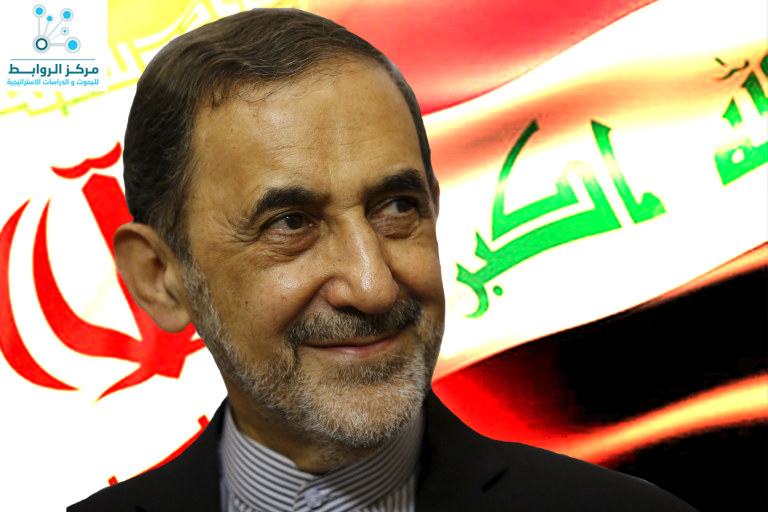Ali Akbar Velayati, a senior advisor to Supreme Leader of Iran (Murshed) Ayatollah Ali Khamenei on international affairs, paid a visit to Baghdad on February 15, 2018 at the invitation of the Secretary General of the Iraqi Council of Ministers Ali Al-Alak to participate in the program of establishing the International forum for rapprochement of Islamic sects.
Velayati attended the conference and delivered a speech addressing the Iranian strategy in the Middle East and the political vision of how to deal with the American presence in Syria and Iraq and his call for the continuation of the alliance between Iran, Iraq and Syria in the axis called “axis of resistance” stressing that Iraq has a pivotal role in support of the Iranian vision.
These were the outward features of the visit, but its reality is that it was a good opportunity for the Iranian official, an ally of the Iraqi government, to reinforce his visits by meetings of Iraqi officials and some of the leaders of the armed militias linked to Iran and to explain the Iranian vision and common work to enhance the Iranian influence and presence in Iraq.
The presence of Velayati for Baghdad and the statements and talks related to the Iraqi issue and his reference to the emergence of the Islamic awakening and its dominance and advancement comes within the following contexts and features:
1. Velayat stressed on the reality of the Iranian influence and hegemony over the Iraqi political decision when he pointed out in the presence of al-Maliki that the Islamic awakening has risen and spread and has gained its status and influence, and therefore the Iranian leadership (does not allow the return of liberals and communists to power in Iraq) and this confirms the reality of the Iranian vision of the nature of dealing with Events inside Iraq after the next elections on 12 May 2018 and a message addressed to the US administration, which has its political interests in Iraq and seeks to achieve it after the election also.
2. This statement proves that Iran’s arms and tools have the ability to do what it can be done and that it reinforces the Iranian move that took root in Iraq after the US invasion on April 9, 2003 and deepens the Iranian role in interfering in Iraq’s internal politics and shaping its political future in line with Iran’s vision.
3. The statement is a clear interference in the internal affairs of Iraq and an incitement of the Iraqi voters to support the Islamists of the political movements and parties associated with Iran and thus constitute a process of robbery and intimidation of the will of the Iraqi voter.
4. Velayat is trying to work clearly to send a disguised message to the Sadrists and their supporters after their alliance with the Iraqi Communist Party and a number of liberal figures and elements of civil society that they will not have a field presence and influential future in Iraqi political life and the Iraqi decision, and this is also related to the directions of Ammar al-Hakim of the Liberalism and its political changes by leaving the Iraqi Islamic court and establishing , the National wisdom Movement .
5. He directed a clear political message and guidelines for the Iraqi Prime Minister Abadi, who is trying to seek alliances and political axes that take it upon themselves to move away from sectarian and factionalism and work according to a political perspective that defines the features of governance in Iraq with civil and proper vision , pointing out that this approach will encounter conflict and competition In the field by Islamic parties backed by Iran.
6. The visit followed a series of failures and political conflicts between the wings of the Shiite National Alliance, which has been supported by Iran since 2005, and seeks to strengthen the political cohesion and consensus between all the pillars of the political process in the National Alliance supporting the Iranian vision and prevent any collision or difference between the alliance of Fatih al-Mubeen led by Hadi al-Amiri and the alliance of the rule of law led by Nuri al-Maliki, especially after the rift that occurred in the alliance of al-Naser and Fatah al-Mubeen , and work to mobilize all energies to weaken the moderate Shiite political trend claimed by both the Sadrist movement and the movement of wisdom.
7. Velayati went too far in his visit to Baghdad to set out the features of Iranian policy in the Middle East. He held a tripartite meeting between some of the leaders of the armed militias and Mufti of Syria Ahmed Badr al-Din, who was invited to participate in the establishment of the rapprochement forum between the Islamic sects and with an Iranian presence to symbolize Iran’s attempt to involve Iraq of what is called “axes of the resistance” and strengthening the supporting role to the Iranian approach, otherwise, Velayat would have been able to hold such meetings in Damascus or Tehran?
Will Ali Akbar Velayati’s visit to Baghdad give a political impression that the results of the upcoming elections in Iraq have been resolved in favor of the political movement supported by Iran or will we see a political vision, prospects and conflicts of alliances competing with the Iranian project in Iraq?
Iraqi Studies Unit
Rawabet Center for Research and Strategic Studies

